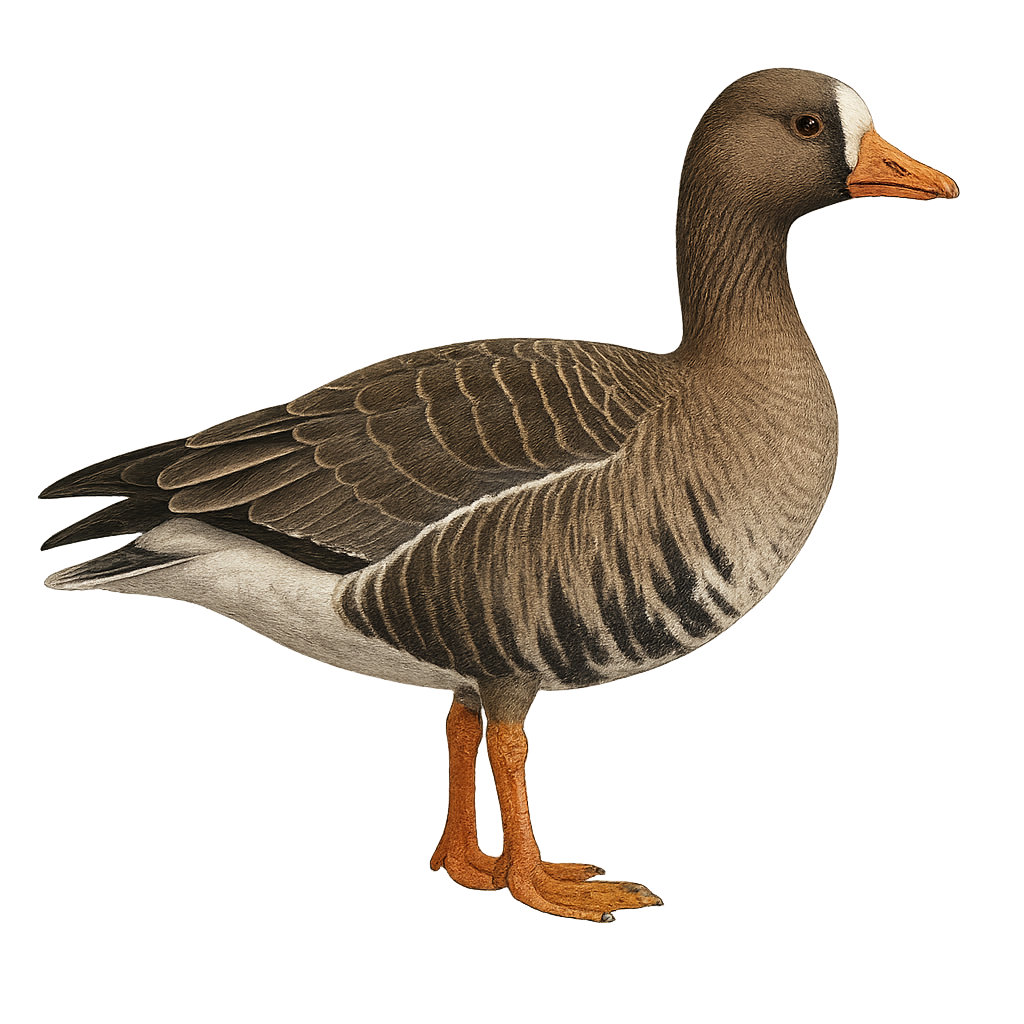Your wildlife photography guide.
Explore the greater white-fronted goose in detail, study its behavior, prepare your shots.
Where to observe and photograph the greater white-fronted goose in the wild
Learn where and when to spot the greater white-fronted goose in the wild, how to identify the species based on distinctive features, and what natural environments it inhabits. The WildlifePhotographer app offers tailored photography tips that reflect the greater white-fronted goose’s behavior, helping you capture better wildlife images. Explore the full species profile for key information including description, habitat, active periods, and approach techniques.
Greater White-fronted Goose
Scientific name: Anser albifrons

IUCN Status: Least concern
Family: ANATIDAE
Group: Birds
Sensitivity to human approach: Suspicious
Minimum approach distance: 10 m
Courtship display: May to July
Incubation: 22-25 jours
Hatchings: June to August
Habitat:
Wetlands, marshes, flooded meadows
Activity period :
Primarily active during the day, with peak activity in the morning and late afternoon.
Identification and description:
The Greater White-fronted Goose, Anser albifrons, is a migratory bird species belonging to the Anatidae family. It is easily recognizable by its brown-gray plumage, white face, and pink bill. Adults have a distinctive white band on the forehead, which gives them their name. This species primarily inhabits wetlands, marshes, and flooded meadows. It migrates over long distances, spending summers in Arctic regions and winters in temperate zones. The Greater White-fronted Goose is social and often gathers in large flocks. It feeds mainly on aquatic plants, seeds, and roots. Although its conservation status is currently of least concern, it is sensitive to environmental changes and habitat loss.
Recommended lens:
400mm – adjust based on distance, desired framing (portrait or habitat), and approach conditions.
Photography tips:
To photograph the Greater White-fronted Goose, focus on wetlands where it often gathers in large flocks. Use a telephoto lens of 400mm or more to capture detailed images without disturbing the birds. Be patient and discreet, as this species is suspicious but can tolerate a calm human presence. Prefer morning or afternoon hours to benefit from soft, natural light. Remember to check the weather forecast to avoid rainy days that could complicate shooting.
The WildlifePhotographer App is coming soon!
Be the first to explore the best nature spots, track rutting seasons, log your observations, and observe more wildlife.
Already 1 431 wildlife lovers subscribed worldwide

